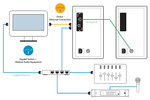D
Deleted member 188516
Guest
below is a video featuring a factory tour of naim audio.
at the 11.50 mark an explanation is given for why naim use din plugs.
if all true it makes me wonder why all hifi companies don't use din plugs ?
View: https://www.youtube.com/watch?time_continue=149&v=1Z5MIW-HrNc&feature=emb_logo
at the 11.50 mark an explanation is given for why naim use din plugs.
if all true it makes me wonder why all hifi companies don't use din plugs ?


